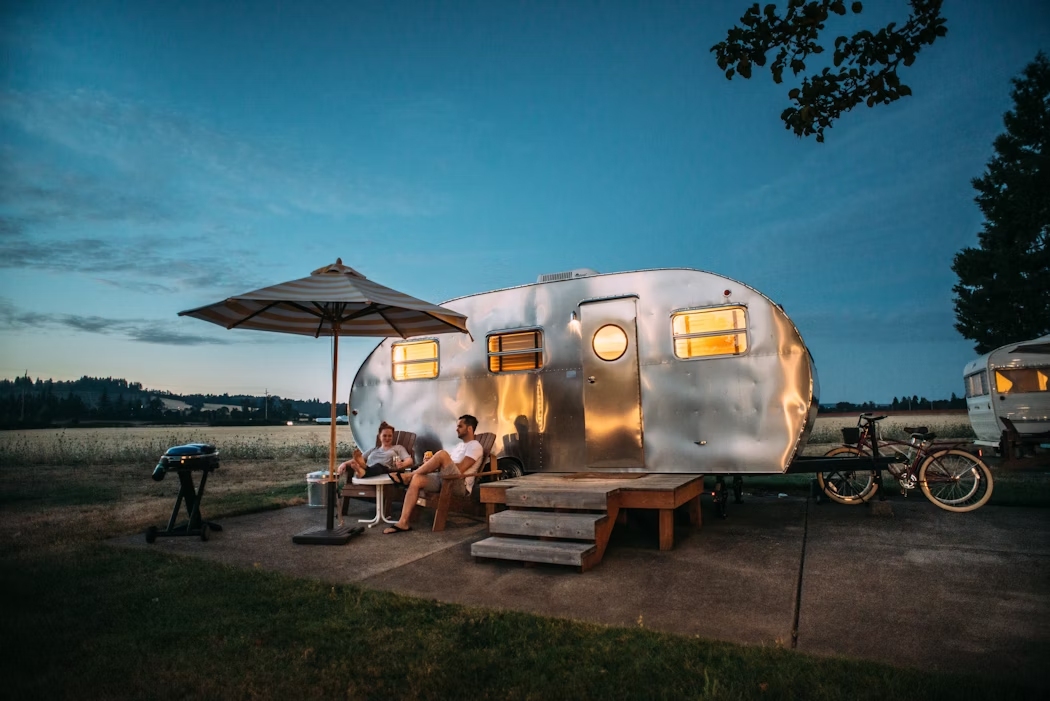Solo camping is an incredible way to reconnect with yourself, challenge your independence, and immerse yourself in nature. Whether you’re a seasoned camper or a beginner, venturing into the wilderness alone can be both empowering and transformative. However, solo camping requires careful planning and preparation to ensure a safe and enjoyable experience. In this guide, we’ll walk you through everything you need to know to make your solo camping trip a success.
Why Go Solo Camping?
Before diving into the logistics, let’s talk about why solo camping is worth considering:
- Self-Discovery: Spending time alone in nature allows you to reflect, recharge, and gain clarity.
- Freedom and Flexibility: You can set your own schedule, choose your activities, and explore at your own pace.
- Boost Confidence: Successfully navigating a solo trip can be a huge confidence booster.
- Peace and Quiet: Without the distractions of daily life or the company of others, you can fully immerse yourself in the serenity of nature.
1. Choose the Right Destination
Selecting the right location is crucial for a successful solo camping trip. Here are some factors to consider:
- Familiarity: If you’re new to solo camping, choose a destination you’re familiar with or one that’s well-marked and easy to navigate.
- Safety: Opt for established campgrounds or popular trails where you’re likely to encounter other people. Avoid remote or high-risk areas unless you’re an experienced outdoors enthusiast.
- Accessibility: Consider how far you’re willing to travel and whether the destination is easy to reach. Proximity to emergency services is also a plus.
- Regulations: Check if the area requires permits or has specific rules for solo campers.
2. Pack the Essentials
When camping alone, it’s especially important to pack wisely. Here’s a checklist of must-have items:
- Shelter: A reliable tent, tarp, or hammock.
- Sleeping Gear: A warm sleeping bag, sleeping pad, or air mattress.
- Cooking Supplies: A portable stove, fuel, lightweight cookware, and utensils.
- Food and Water: Non-perishable food, a water filter or purification tablets, and a reusable water bottle.
- Clothing: Weather-appropriate layers, sturdy footwear, and rain gear.
- Navigation Tools: A map, compass, and GPS device (don’t rely solely on your phone).
- First Aid Kit: Include bandages, antiseptic, pain relievers, and any personal medications.
- Lighting: A headlamp or flashlight with extra batteries.
- Emergency Supplies: A whistle, fire starter, multi-tool, and emergency blanket.
3. Prioritize Safety
Safety should be your top priority when camping alone. Here are some tips to stay safe:
- Share Your Plans: Let someone know your itinerary, including your destination, route, and expected return date. Check in with them regularly if possible.
- Stay on Marked Trails: Sticking to established trails reduces the risk of getting lost.
- Be Weather-Wise: Check the forecast before you go and be prepared for changing conditions.
- Wildlife Awareness: Research the local wildlife and know how to store food properly to avoid attracting animals.
- Trust Your Instincts: If something feels off, trust your gut and make adjustments to your plans.
4. Master Basic Survival Skills
Even if you’re camping in a relatively safe area, knowing basic survival skills can give you peace of mind:
- Fire Building: Practice starting a fire with matches, lighters, or a fire starter.
- Navigation: Learn how to read a map and use a compass.
- First Aid: Familiarize yourself with basic first aid techniques, such as treating cuts, burns, and sprains.
- Water Purification: Know how to filter or purify water from natural sources.
5. Embrace the Solitude
One of the biggest challenges of solo camping is dealing with loneliness or boredom. Here’s how to make the most of your alone time:
- Bring a Journal: Writing down your thoughts and experiences can be therapeutic.
- Practice Mindfulness: Take time to appreciate the sights, sounds, and smells of nature.
- Stay Busy: Plan activities like hiking, fishing, or photography to keep yourself engaged.
- Disconnect: Use this opportunity to unplug from technology and enjoy the simplicity of life outdoors.
6. Leave No Trace
When camping alone, it’s especially important to minimize your impact on the environment. Follow these Leave No Trace principles:
- Pack It In, Pack It Out: Carry out all trash and leftover food.
- Respect Wildlife: Observe animals from a distance and avoid feeding them.
- Camp on Durable Surfaces: Set up your tent in designated areas or on durable surfaces like rock or gravel.
- Minimize Campfire Impact: Use a camp stove for cooking and keep fires small if allowed.
7. Start Small and Build Confidence
If you’re new to solo camping, start with a short trip close to home. This will help you build confidence and identify any areas where you need more preparation. As you gain experience, you can gradually tackle more challenging destinations.
8. Enjoy the Journey
Solo camping is as much about the journey as it is about the destination. Embrace the challenges, celebrate your successes, and take time to appreciate the beauty of the natural world. Whether you’re watching a sunset, listening to the sounds of the forest, or simply enjoying a quiet moment by the campfire, solo camping offers a unique opportunity to connect with yourself and the world around you.
Conclusion
Solo camping is an adventure like no other. It’s a chance to step out of your comfort zone, test your limits, and discover what you’re truly capable of. By choosing the right destination, packing wisely, prioritizing safety, and embracing the solitude, you can create a solo camping experience that’s both safe and rewarding. So why wait? Start planning your solo camping trip today and embark on a journey of self-discovery and adventure.

